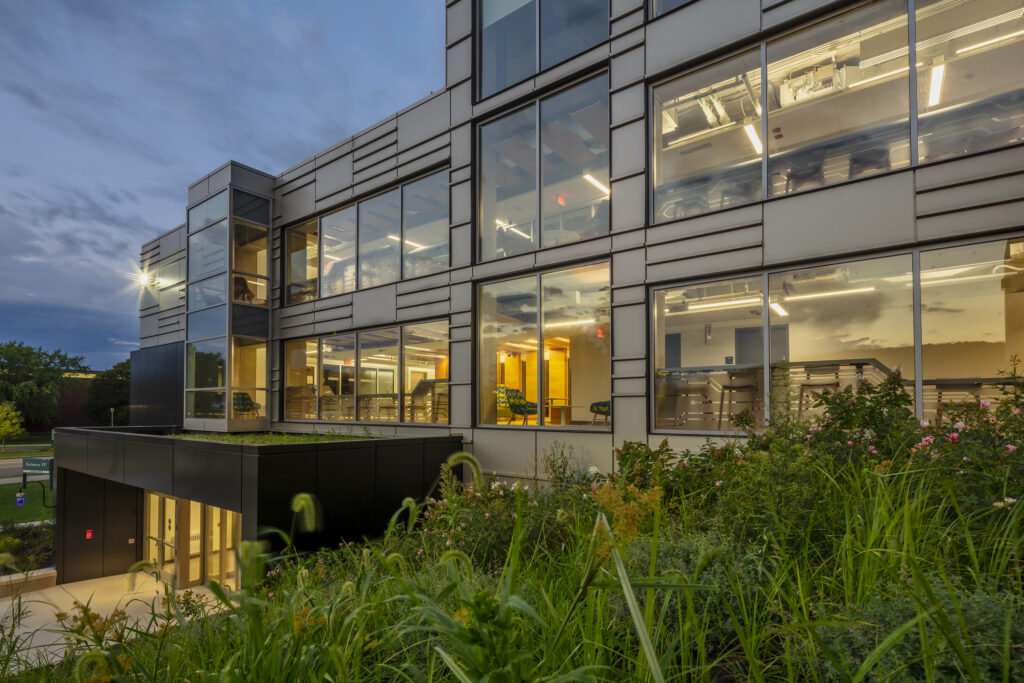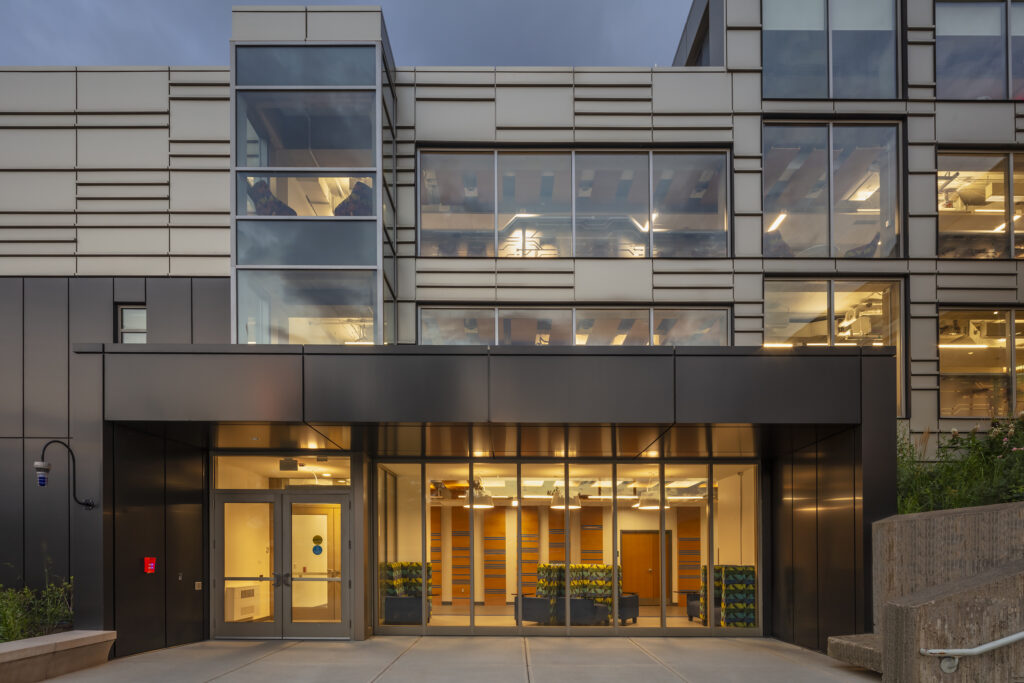The renovation and retrofit of the Science IV building on the campus of Binghamton University demonstrates how the skillful design, fabrication and application of ALUCOBOND® PLUS can transform an outdated, boring façade. Now an iconic structure that welcomes visitors to campus, this project has been recognized by the AIA New York State Excelsior Awards, receiving the Honor Award for Renovation/Addition; and, esteemed by the AIA Central New York obtaining its Award of Excellence.
Highlights
• The formability of ALUCOBOND® PLUS allowed the fabricator to expertly mimic DNA mapping patterns, transforming the building into a campus icon.
• The design team chose ALUCOBOND® PLUS for its durability, which they believed would contribute to the longevity of the building’s façade.
• “ALUCOBOND® PLUS made it possible for us to accomplish our unique design intent and deliver results we are proud of, and that have been recognized by our peers in the New York architect community.”
Details
Project
Science IV Renovation/Deep Energy Retrofit, State University Construction Fund and Binghamton University
Location
Binghamton, NY
Product
ALUCOBOND® PLUS, Brushed Carbon and Anodic Satin Mica
Lead Artist
Jason Evans and Sara Berg, Ashley McGraw Architects
Fabricator
Photos
Gitzen, Co., Inc.
3A Composites
Project Overview
The Science IV building, originally housing the University’s animal research department, was slated for a complete renovation to serve as the new home of the University’s psychology department. The building’s transformation aimed to shift its look and feel from a high-intensity lab environment to a more welcoming setting that would warmly accommodate clinical visitors and research trial participants. Science IV’s central location on campus made it a prime candidate for a high-profile makeover with visual impact.
The Design
The exterior design concept for the building drew inspiration from the psychology and brain research that would be completed inside, with a specific focus on DNA mapping. The architects envisioned a façade that mimicked the patterns found in DNA, representing the building’s new purpose and creating a unique identity on campus. The decision to re-skin the entire building — as opposed to simply repairing the masonry — was driven by the desire for it to become a distinctive symbol for the school.
To achieve the architect’s three primary objectives of improving thermal performance, achieving greater efficiency and enhancing the appearance, the building underwent a series of upgrades. Improvements to its envelope included installation of a layer of spray foam insulation, a rainscreen system and ALUCOBOND® PLUS panels which were chosen because they are lightweight and easily formable, making the material ideal for the retrofit.
ALUCOBOND® PLUS not only served an aesthetic purpose as the primary cladding choice, but also functioned as an accent, framing the building entrances and window banks and adding additional architectural interest. The design team also chose the 3A Composites product for its durability, which they believed would contribute to the longevity of the building’s façade. Likewise, in the event of damage, panels could be easily replaced, ensuring the building’s curb appeal would remain intact.
Finally, the ALUCOBOND® PLUS colors were selected to ideally represent the technical aspect of the work being done inside the building, while at the same time beautifully contrasting with the look of the original masonry. Specifically, Anodic Satin Mica was chosen for its vibrance and the dynamic ways in which the color interacts with light, uniquely and brilliantly shifting between champaign and silver.
“The Science IV building has undergone a complete metamorphosis, and we are honored to have had a role in its stunning outcome,” said Jason Evans, architect and associate principal, Ashley McGraw Architects. “ALUCOBOND® PLUS made it possible for us to accomplish our unique design intent and deliver results we are proud of, and that have been recognized by our peers in the New York architect community.”
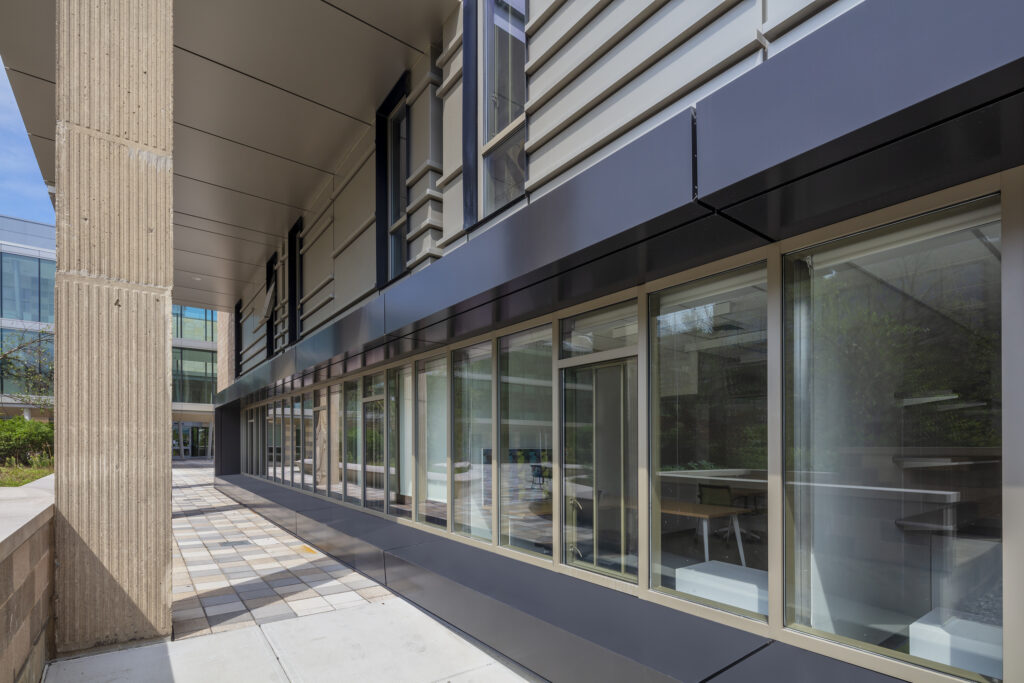
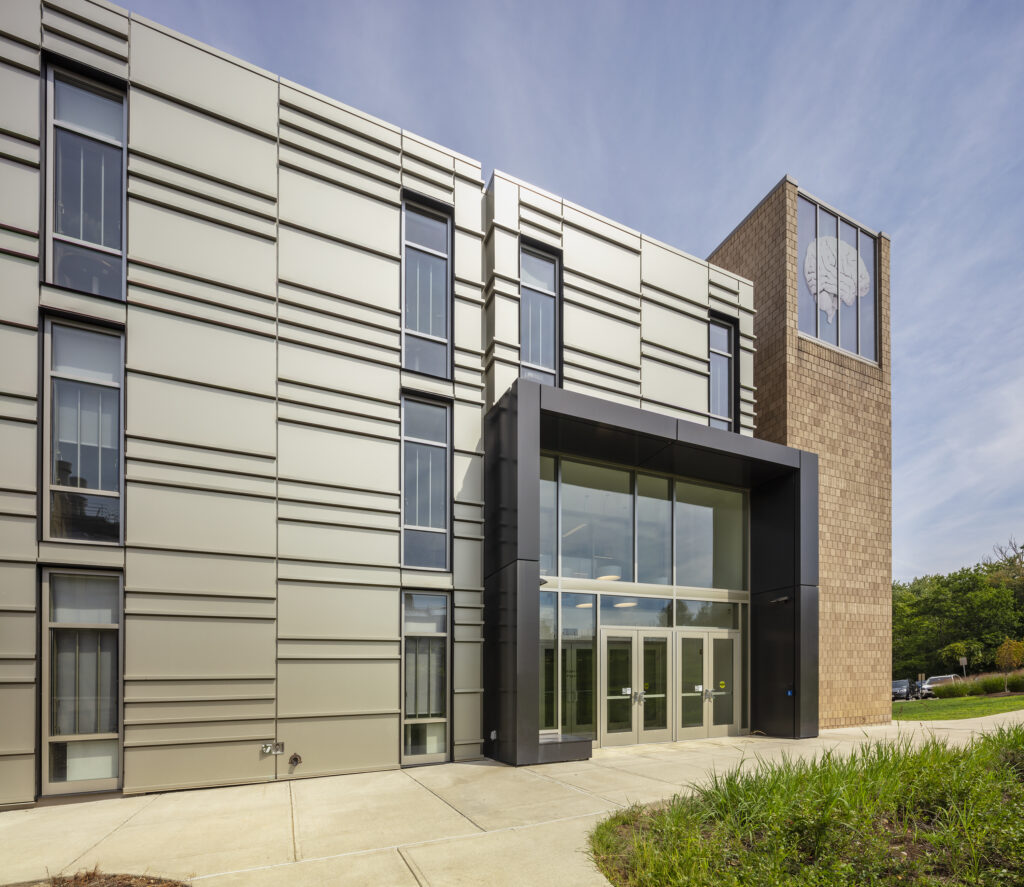
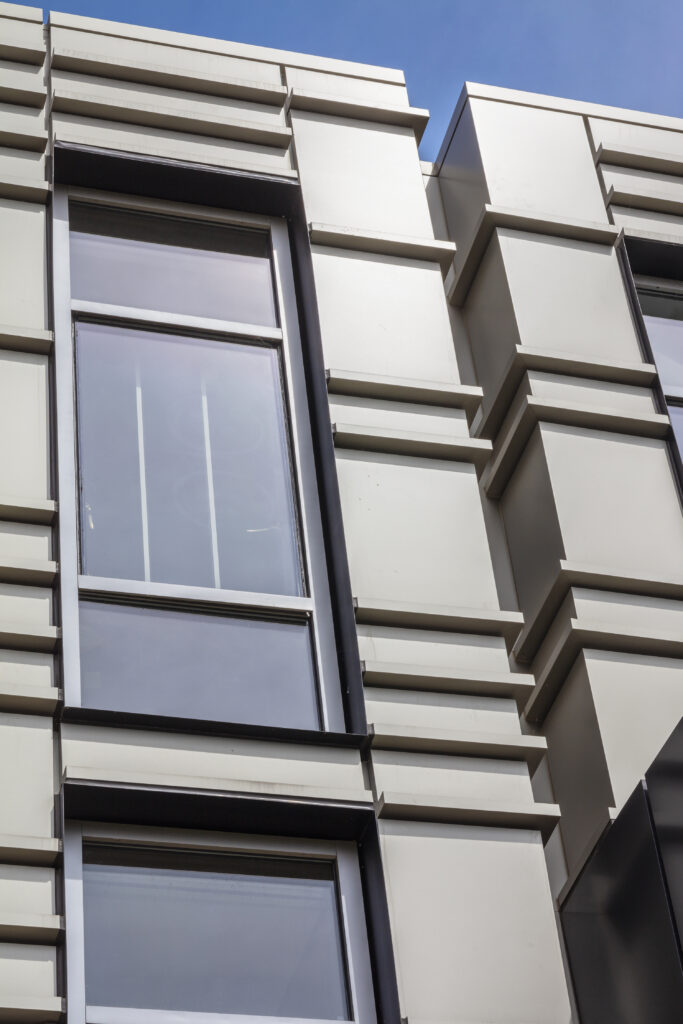
Fabrication and Installation
Fabrication of the ribbed panels was a creative and skillful process. Syracuse-based fabricator, Gitzen Co. Inc., collaborated with the project team to produce test panels that successfully achieved the intended look. The formability of ALUCOBOND® PLUS allowed Gitzen to accomplish the ribbed profile, and deliver the DNA mapping pattern. While the panels vary in size, ranging from one to three feet wide, depending on their placement on the building, a blend of alternating panels feature a “bump-out” that extends two inches and accentuate the DNA pattern.
The Possibilities
The Binghamton University Science IV building’s makeover showcases the creative and innovative use of ALUCOBOND® PLUS. Its ribbed panels expertly mimic DNA mapping patterns, turning the building into a campus icon. The lightweight and formable nature of the material allowed for the realization of the designer’s intent, while its durability ensures the façade’s longevity. Equally important, the architect selected ALUCOBOND® PLUS, to enhance the structure’s energy performance and meet LEED Silver requirements. Ultimately, through its renovation, the building has been successfully repurposed to provide a welcoming and inspiring environment for the psychology department’s research and visitors alike.
For more information about ALUCOBOND, visit www.alucobondUSA.com, call 1-800-626-3365 or email info.usa@3AComposites.com.
